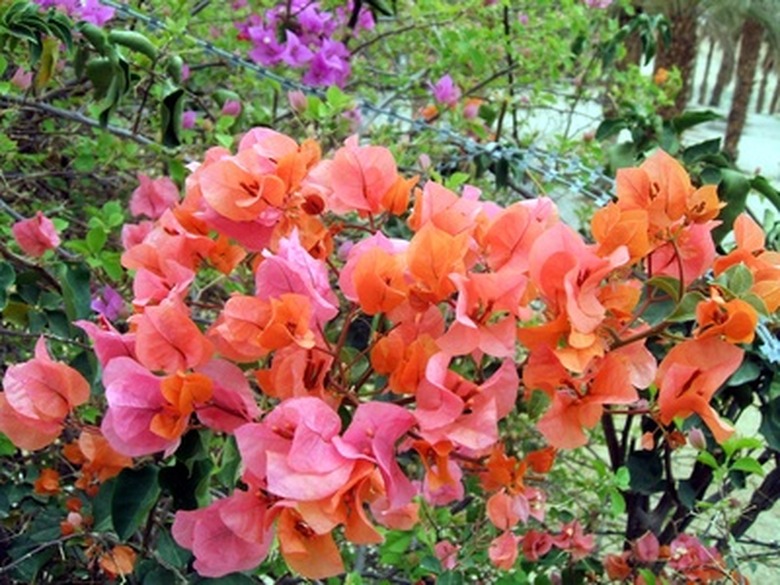Bugambilia Plant Care
The bugambilia plant is a showy, evergreen or semi-evergreen perennial vine or shrub. Bugambilia is the Spanish term for the plant. In English, the plant is usually called a bougainvillea or paper flower for its thin, delicate bracts (modified leaves). Although lightweight, the bracts are nonetheless showy, clumped together on the branches in large clusters and blooming in a profusion of bright colors. Bugambilia plants are quite versatile and can be easily grown, according to Edward F. Gilman, a horticulturist with the University of Florida.
Climate
The bugambilia plant is native to subtropical and tropical Brazil. In North America, it can only be grown outdoors successfully in USDA hardiness zones 9B to 11, which consists of the southern half of Florida, the southern tip of Texas, parts of California and all of Hawaii.
- The bugambilia plant is a showy, evergreen or semi-evergreen perennial vine or shrub.
- In English, the plant is usually called a bougainvillea or paper flower for its thin, delicate bracts (modified leaves).
Light
Bugambilia require full light to fully thrive. These plants will drop their colorful bracts if exposed to too much shade, according to Kent D. Kobayashi, a horticulturist with the University of Hawaii. Place your bugambilia where it will receive at least 6 hours of sunlight a day, and preferably eight to 12 hours for optimum blooming.
Food and Water
Bugambilia plants need continually moist soil. Although they will tolerate short periods of drought, they perform better when the planting medium is kept evenly moist. Standing water will lead to root rot, so the soil needs to drain well. Bougainvillea are heavy feeds, so fertilize the shrub every other week during the growing season with a water-soluble fertilizer formulated for flowering shrubs.
- Bugambilia require full light to fully thrive.
Soil
Bugumbilia will grow in many different types of soil, including acidic, slightly alkaline, clay or sandy soil. The shrub prefers rich, loamy soil. A loose soil mixture will allow the water to drain quickly. Use a soil-less planting medium for best results, or amend outdoor soil with perlite or coarse sand to aid in draining.
Pruning
Bugambilia tolerates heavy pruning and can be shaped any time of the year. More than one plant can be trained to grow as a hedge, or one plant can be trained to grow in the form of a tree. These plants should be root bound and should not be transplanted if possible. They can also be grown in 1-gallon containers.
- Bugumbilia will grow in many different types of soil, including acidic, slightly alkaline, clay or sandy soil.
- Bugambilia tolerates heavy pruning and can be shaped any time of the year.
